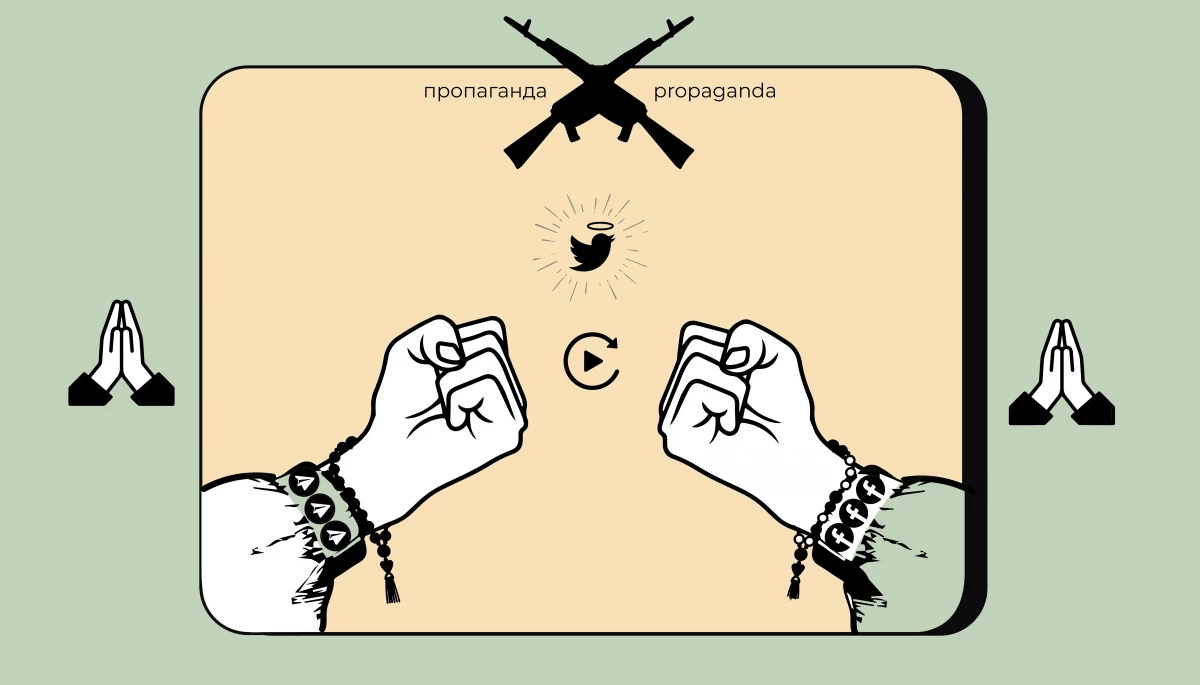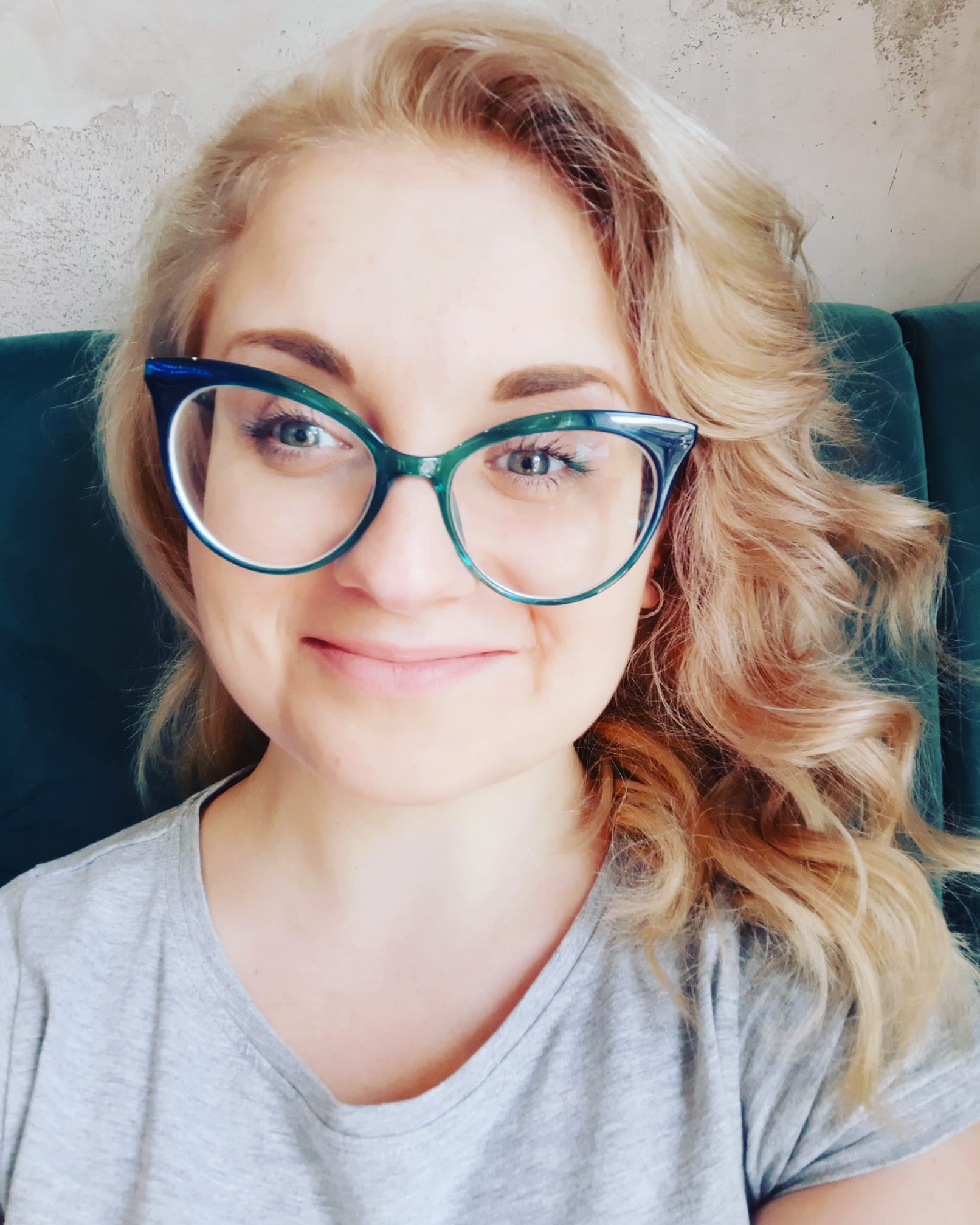
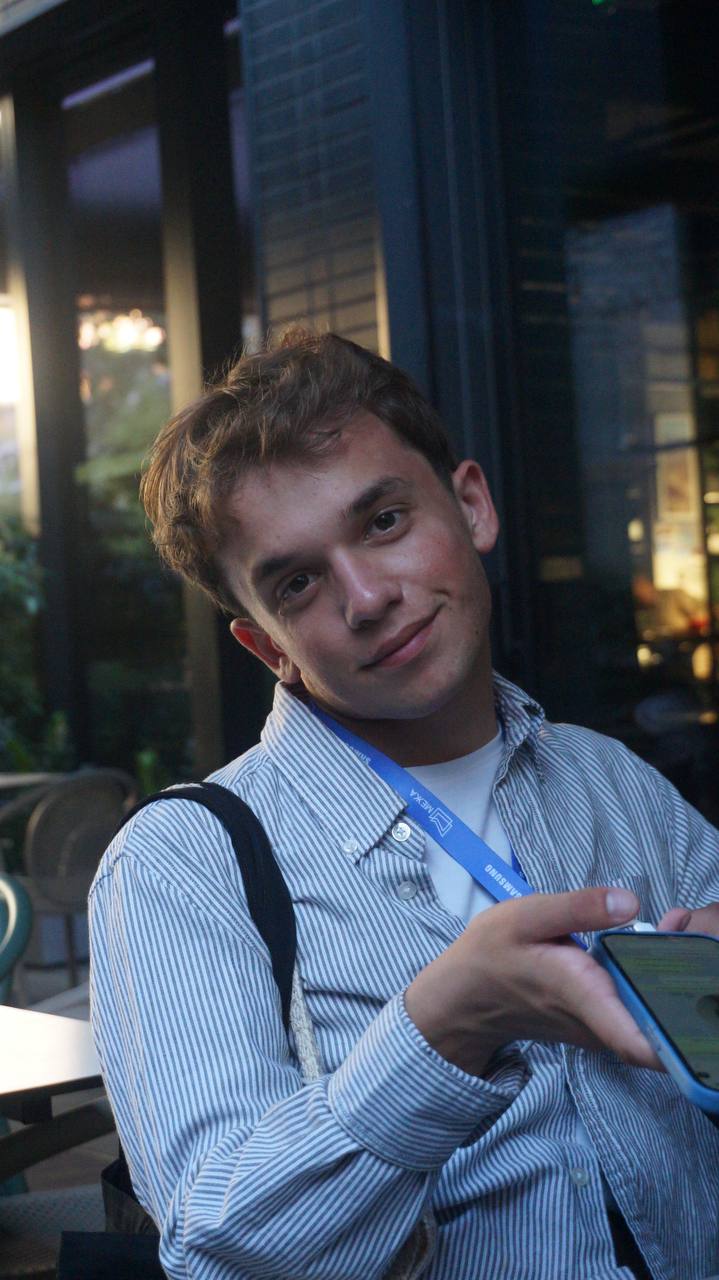
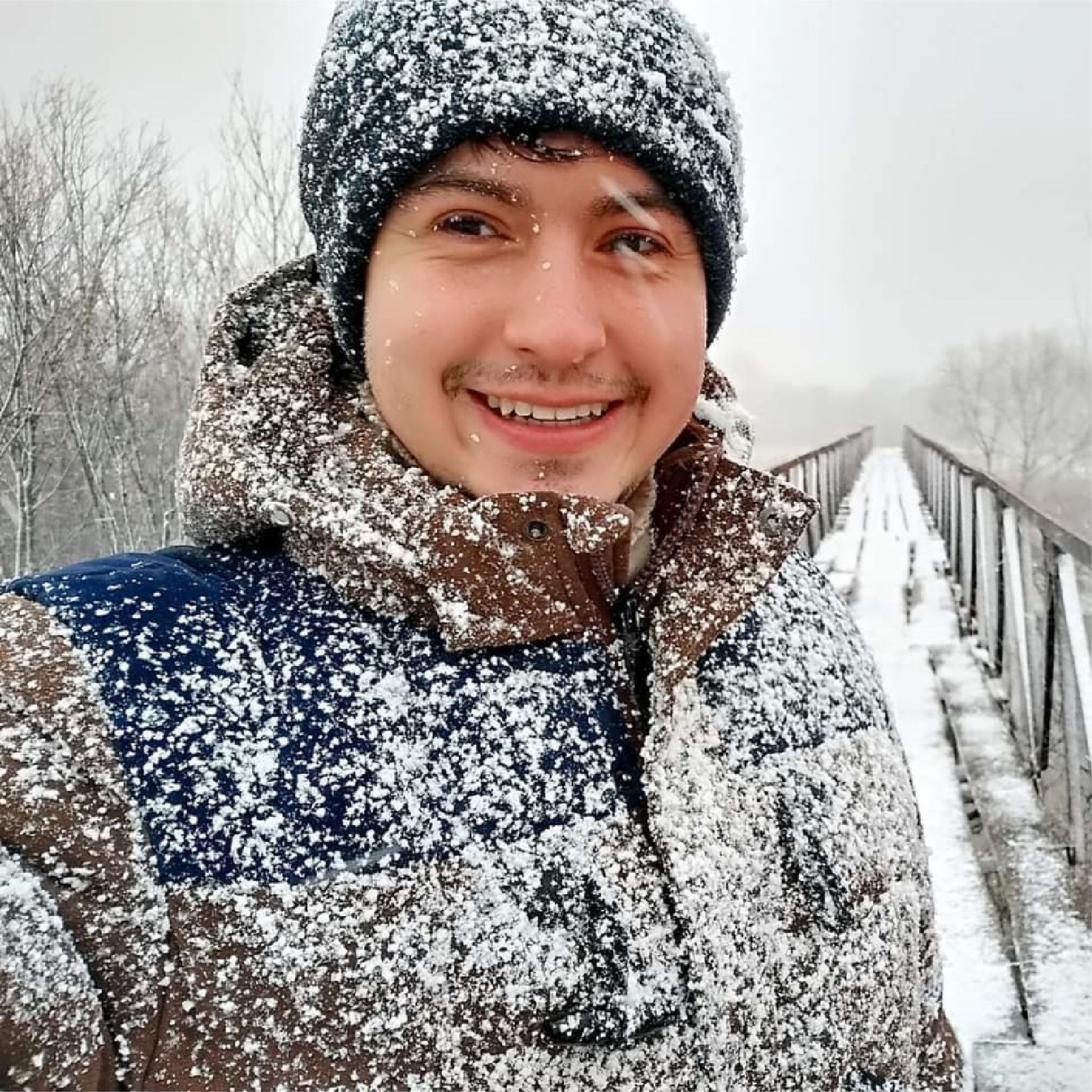
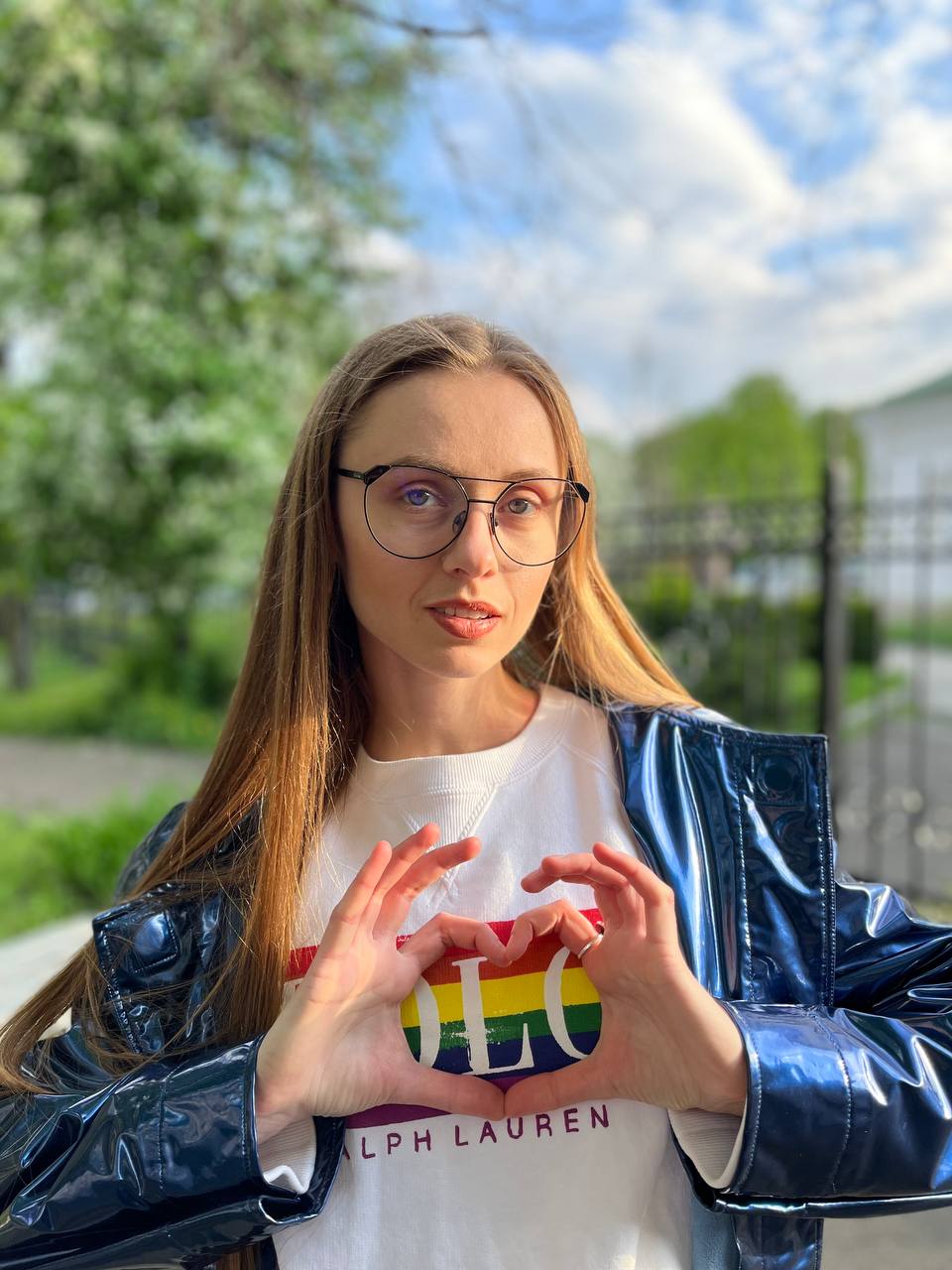
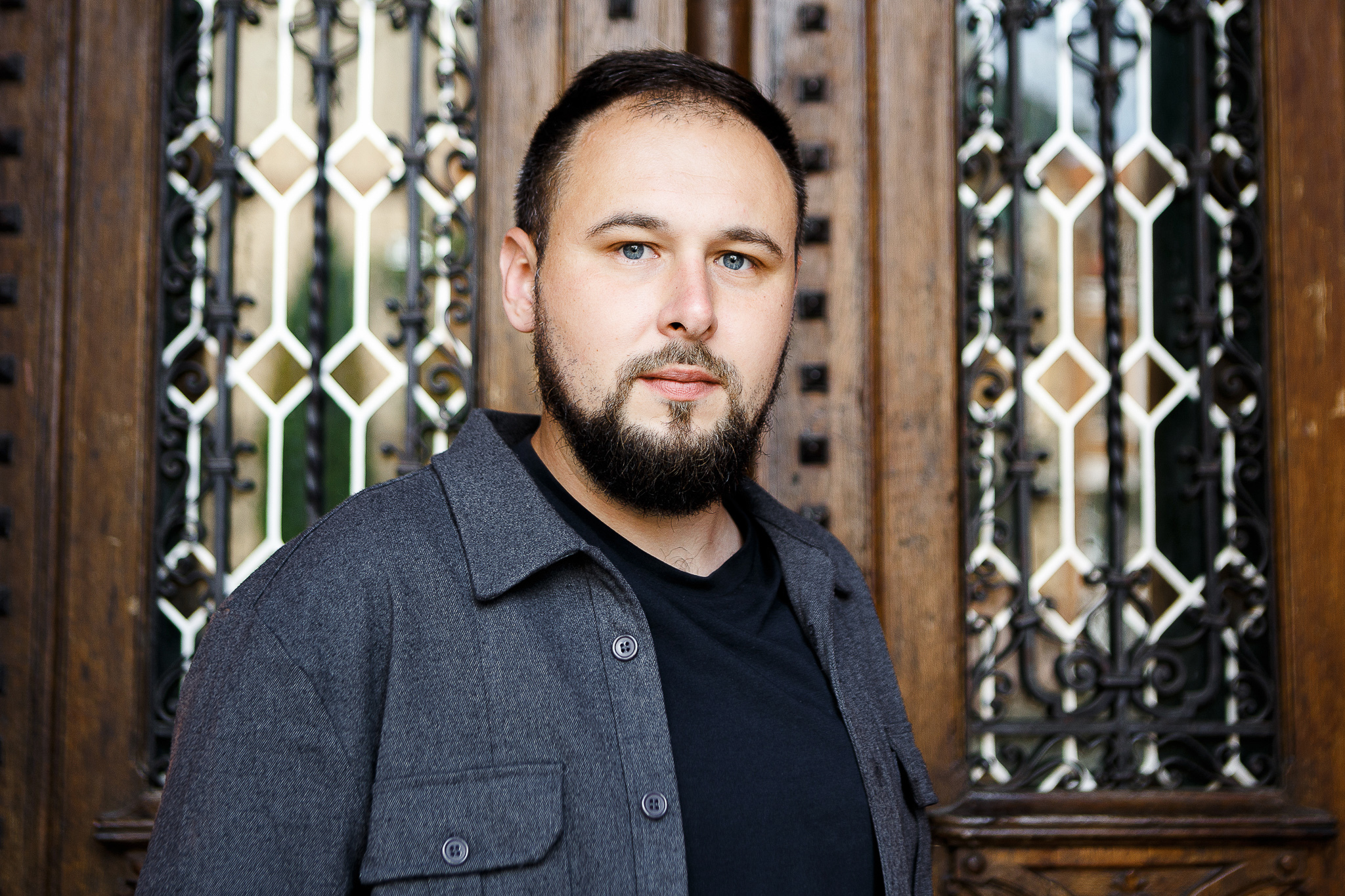

During the full-scale war, Detector Media has been consistently investigating Russian disinformation within both Ukrainian and Russian segments of social media. We have observed a surge in mentions and manipulations concerning matters associated with Ukraine’s religious communities. Our team of diligent analysts and researchers conducted a thorough analysis of tens of thousands of posts, particularly focusing on instances where pro-Russian social media users on platforms like Telegram, YouTube, Facebook, and Twitter employed manipulations centered on the subject of religion. Our investigation spanned diverse religious topics, including Catholicism, Orthodoxy, Islam, Christian sects, the “ departure from canonical principles,” and the propagation of “Satanism and paganism” within Ukraine. This study showcases key narratives that amplify interfaith animosity, leverage religious differences, and once more substantiate the fact that the Russian propaganda machine doesn’t hesitate to exploit the theme of faith to promote conflict within Ukrainian society.
Propaganda directed against religious communities is the dissemination of biased or misleading information that generates negative attitudes, fuels stereotypes about members of different faiths, and justifies discrimination against them. Propaganda seeks to portray religious communities as potentially dangerous or extremist, relying on stereotypes and fakes to cause fear in society. American researcher David Elcott notes that the weaponization of religion is used to justify restrictions on freedom and the marginalization of minorities around the world. He notes that after the Second World War, religious movements became more closely aligned with populist nationalism, which often portrays itself as a defender of the nation’s “true” values, traditions, and interests against threats posed by globalization, immigration, or supranational organizations. Elcott writes that religious identity is an even more powerful force for affirming national identity than personal religious beliefs and practices. As an example, he cites the rise of anti-liberal political movements and politicians: the right-wing populist party Alternative for Germany, Marine Le Pen in France, Viktor Orban in Hungary, and Narendra Modi in India. Political movements that were clearly not initially founded to defend the interests of believers have now become the most zealous defenders of the idea of “preserving purity and authenticity,” including religious ones, and oppose “outsiders” taking away their nation, religion, culture, and values.
The Northern Ireland conflict that spanned the 1960s to the 1990s provides a comparatively recent example of the weaponization of religion. Predominantly, Protestant communities identified as supporters of the UK’s continued sovereignty over Northern Ireland, while Catholic communities, often labeled as nationalists, pursued reunification with the Republic of Ireland. This encapsulates the merging of religious identities with political ambitions, with faith becoming a key tool in political strife. The entities engaged in this conflict, which included both paramilitary groups and political parties, employed propaganda to mold public sentiment, rally backing, advocate their agendas, and justify their actions. This included demonizing the religious faction to which their adversaries belonged, manipulating historical narratives to exacerbate sectarian divisions, and legitimizing acts of terror against members of a different faith. Mitigating propaganda and endorsing reconciliation became pivotal to the successful negotiation of the 1998 Good Friday Agreement, which, despite not resolving all inconsistencies, managed to put an end to the bloodshed.
In Ukraine, the proportion of people who identify themselves as believers has been on the rise over the past two decades. While in 2000, 58% of Ukrainians called themselves believers, in 2022, their number increased to 75%. Since the topic of faith concerns three-fourths of Ukrainians, Russian propaganda is trying to exploit religion in every possible way to split Ukrainian society and weaken it. To do this, propagandists are trying to revive old interpretations of the non-canonicity of some religious communities and the canonicity of others that are favorable to Russia, as well as to form new narratives and undermine trust in secular and church institutions. The argument of “protecting canonical Orthodox Christianity” was also used as one of the justifications for Russia’s invasion of Ukraine.
According to a study by the Kyiv International Institute of Sociology, 44% of respondents trusted religious organizations in Ukraine at the end of 2022. This is one of the lowest rates of trust in religious institutions in Ukraine over the past decade. A year ago, half of the Ukrainians surveyed trusted them, and in 2020, the figure was 62.5%. In February 2020, two years before Russia’s full-scale invasion, only the Armed Forces of Ukraine and the State Emergency Service had a greater balance of trust among social and state institutions. In contrast, at the end of 2022, political institutions such as the President of Ukraine and the Cabinet of Ministers, which Ukrainians trusted much less before the full-scale war, had a greater balance of trust than the church. Anton Hrushetskyi, deputy director of the Kyiv International Institute of Sociology, explains the growth of trust in state institutions as “evidence of citizens’ unity in critical circumstances. Social cohesion is one of the key factors in successful resistance to the enemy.”
Interfaith disputes between Orthodox religious communities, whose believers make up two-thirds of Ukrainians according to a 2020 Razumkov Center survey, have become one of the tools of Russian propaganda used by Russians to divide Ukrainian society. The use of religion as a tool in conflicts and to justify aggression is a well-researched phenomenon in history and social sciences. The use of religious rhetoric and symbolism serves both to justify and condemn armed conflicts.
In the twentieth century, Russia was more likely to be associated with scientific atheism and harsh anti-religious policies, but in the twenty-first century, it is firmly associated with Orthodox Christianity. Over the past three decades, church and politics in Russia have become much closer, and the secular state has instrumentalized religion and exploited the feelings of Russian believers in various ways.
Russia has religious claims to the states that were once part of the Russian Empire, similar to territorial claims: these are supposedly Russian lands, so attempts by countries to build their own hierarchy of secular or religious power are a deviation from the established order. The Kremlin is trying to weaponize religion in Ukraine, turning it into a propaganda tool. To do this, propagandists spread toxic and manipulative messages aimed at dividing Ukrainian society and sowing district to government institutions. With regard to the Ukrainian response to Russian aggression, they also invoke Christian values of brotherhood and forgiveness.
This study focuses on the relationship between religious disinformation and the Russian propaganda machine on social media.
Methodology
In this study, we describe the characteristics of the use of religion-related topics by pro-Ukrainian and pro-Russian users from the Ukrainian segment of Telegram, YouTube, Facebook, and Twitter. By the Ukrainian segment, we mean posts from profiles, pages, groups, and channels that are located in Ukraine or have indicated their location as Ukraine, or have been identified as Ukrainian by data providers.
Read more about the methodology for obtaining and processing data here.
For this study, we analyzed 46,876 posts on the abovementioned social networks created between January 9 and May 9, 2023, provided by LetsData and Semantrum.
We consider pro-Russian social media users to be not only accounts or communities that regularly spread Russian propaganda or promote messages supporting it in between conventionally pro-Ukrainian posts but also those that spread an agenda favorable to Russia more covertly. For example, most of the posts on the Telegram channel of pro-Russian blogger Myroslava Berdnyk (Varjag2007) are repetitions of Russian propaganda messages. In addition to republishing Russian clerics' and secularists’ statements about the persecution of Orthodox Christians, she criticizes the demolition of Soviet monuments and corruption in Ukraine while embracing Soviet nostalgia.
We consider pro-Ukrainian social media users to be those accounts or communities selected for the study that spread messages with elements of xenophobia, but at the same time support for Ukraine and hostility to Russia. For example, users of certain Facebook communities harshly criticized Pope Francis for meeting with a representative of the Russian Orthodox Church in Budapest (see more about this in the section “Foreign Patriarchs supporting the ROC”), for his “peacekeeping” initiatives regarding the Russian war against Ukraine, and for trying to moderate the conflict between the Orthodox Church of Ukraine (OCU) and the Ukrainian Orthodox Church of the Moscow Patriarchate (UOC-MP). The Pope was also criticized for trying to equate the victim and the aggressor during a procession in Rome in the days leading up to Easter last year. We also recorded many xenophobic statements directed against the Ukrainian Orthodox Church, its faithful and the positive reaction to the criminal prosecution of UOC-MP structures.
To avoid spreading propaganda, we quote primary sources and name them only when absolutely necessary. We have translated all Russian publications into Ukrainian [and now English].
Features of disinformation about religious communities in each of the social networks
On Facebook and Twitter, the most controversial posts about the ban on the Ukrainian Orthodox Church of the Moscow Patriarchate came from pro-Ukrainian users. There are also messages defending this denomination. However, supporters of each point of view exist in conditionally isolated communities of like-minded people, and the debate between them does not lead to understanding.
On YouTube, the presence of pro-Ukrainian bloggers and national media is most noticeable, as they try to talk about religious issues without xenophobic language and maintain a pro-Ukrainian stance. The number of pro-Russian bloggers and videos in the analyzed sample is small. However, there are reposts of Russian bloggers who broadcast the position that the “canonical Orthodox Church” is being persecuted in Ukraine.
Most of the posts on Telegram that mention religious aspects of Ukrainian society were created by pro-Russian users and propagandists. Instead, pro-Russian and pro-Ukrainian authors of posts on Telegram exist mostly separately and promote their visions of religious issues in channels and communities where the possibility of comments is disabled. Consequently, it is impossible to assess the attitude of readers to the posts and their reactions to the content.
Key messages and conclusions of the study
“News of the persecution of Orthodoxy”
“Persecuting the Russian Orthodox Church is the same as crucifying Jesus”
During the analyzed period, most of the publications in social media concerned the Ukrainian Orthodox Church of the Moscow Patriarchate. This was the time when major news events naturally provoked discussions on social media:
- protests by supporters of the Moscow Patriarchate near the Kyiv Pechersk Lavra over the termination of the lease agreement for the premises of this monastery complex;
- the detention and placement under house arrest of the Lavra’s abbot, Metropolitan Petro Lebid (Pavlo) of the UOC-MP, for inciting religious hatred and justifying Russia’s aggression against Ukraine;
- an attempt by the leaders of the Russian Orthodox hierarchy in Ukraine to communicate with Ukrainian President Volodymyr Zelenskyy;
- the decisions of several regional councils to ban the UOC-MP;
In discussing these and other news items, pro-Russian social media users presented Ukraine as a state where government officials, together with pro-Ukrainian “radicals” and foreign-funded civil society, are harassing supporters of closer ties with Russia and the “canonical Orthodox Church.” They were opposed by less active but well-organized pro-Ukrainian social media users. They seem to have been sharing posts from shared “temniks” [propaganda handbooks], sometimes quoting them verbatim. Mostly, these people were happy about the problems of the “FSB UOC ideological department with a billion-dollar budget” but spread messages about the corruption of the authorities in Ukraine or, on the contrary, praised Volodymyr Zelenskyy.
Pro-Russian social media users tended to support the Ukrainian Orthodox Church of the Moscow Patriarchate. They said that “the Anglo-Saxons are already actively destroying the last bridge connecting Russians and Ukrainians — the Orthodox Church.” Commenting on news stories about the UOC-MP, such social media users repeated that “the expulsion of monks from the Kyiv-Pechersk Lavra was only the first step in the future oppression of believers in Ukraine.”
Pro-Russian social media users also shared statements by representatives of the Russian Orthodox Church and the Russian authorities in defense of the UOC-MP. Russian representatives most often insisted: “The persecution of the Church contradicts the democratic values of a civilized society.” Among the Russian church, Patriarch Kirill was the most visible; in early March, he “asked the international community to protect the Kyiv-Pechersk Lavra.” At the same time, Russian Foreign Minister Sergei Lavrov sent an appeal to the UN, in which he “drew attention to the blatant violations of the human and constitutional rights of Orthodox believers in Ukraine.” Among the Russian authorities, it was the representatives of diplomatic agencies who most regularly raised the issue of “oppression of Orthodoxy.” In late April, at a briefing, Russian Foreign Ministry spokeswoman Maria Zakharova said: “Kyiv’s persecution of the Ukrainian Orthodox Church (UOC) has reached a new level, and attempts are being made to destroy it completely.”
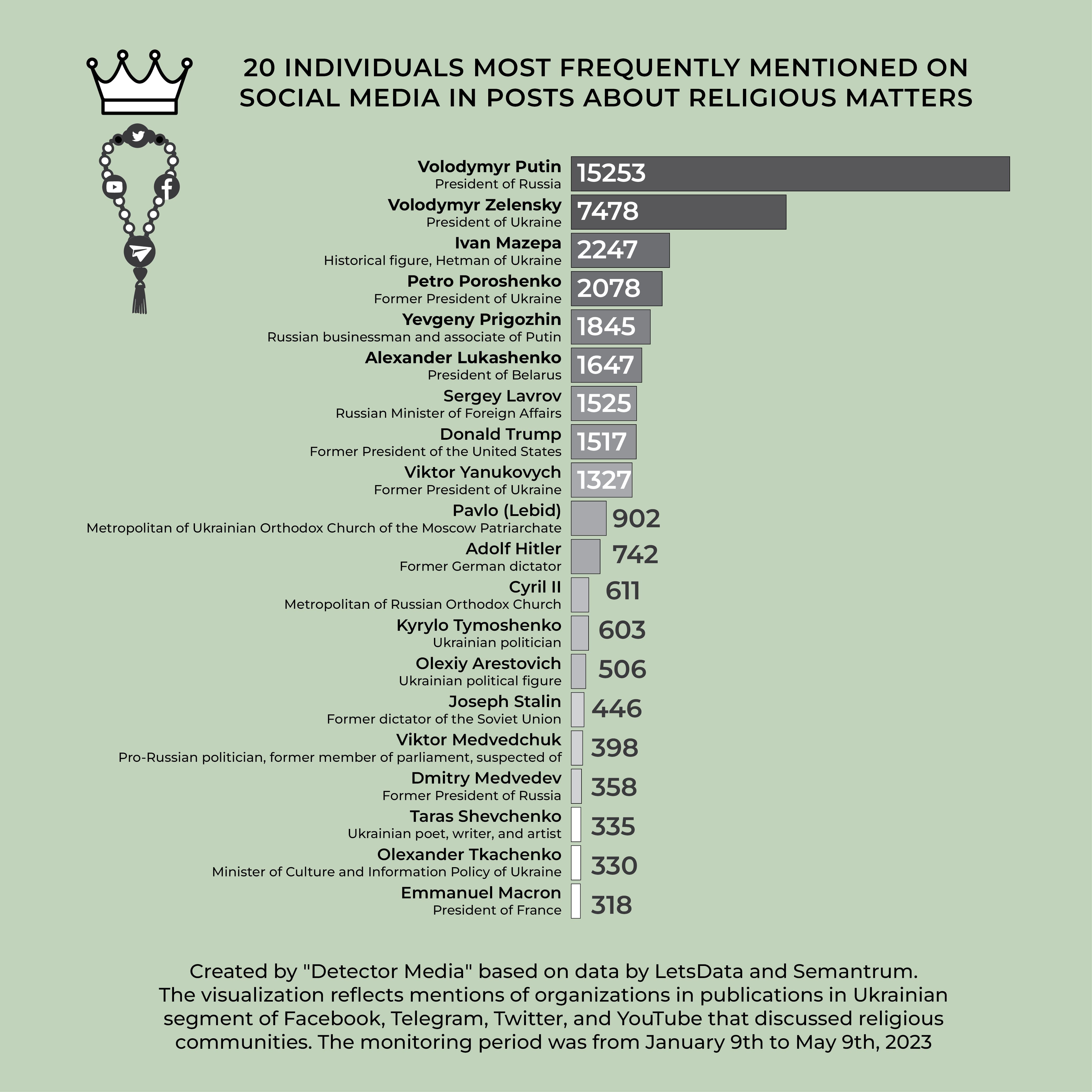
In addition to reposting appeals from Russian religious and secular officials, pro-Russian social media users tried to add domestic political context to their posts. For example, one post read: “We, the believers of the UOC, are the same citizens of our homeland as those who have other religious preferences. During the presidential and parliamentary elections, we all voted for you and your political force, dear Mr. Volodymyr [Zelenskyy], in the hope that the persecution of our Church by Petro Poroshenko would stop.”
Sometimes, pro-Russian social media users tried to draw a parallel between the oppression of the Russian Orthodox Church in Ukraine and the “standard of evil.” Some presented Soviet times as the greatest evil, “when state officials talk about their democracy and respect for all religions, while the country’s Church is being oppressed.” Others, for example, found analogies in biblical stories: “The Jews crucified Jesus Christ 2000 years ago. The Jews are still crucifying Jesus Christ today by persecuting the Orthodox with the help of the SBU.”
Pro-Russian social media users also found the motivation to endure until a better time, when criminal cases are opened against some UOC-MP leaders or the National Security and Defense Council of Ukraine imposes sanctions on them: “Millions of our brothers are now having nails hammered into their palms, their shins broken, and vinegar-dipped sponges pressed against their dried lips... We are in the bloody arena of the first-century Colosseum. Are we going to shout with everyone else while the saints are being devoured by lions? And even if it is not the saints [they are devouring], it is time for silence now. And for prayer,” these were the posts at the end of March 2023.
After Ukraine and other states that support Ukraine, the main enemies of the UOC-MP, according to pro-Russian social media users, were representatives of other denominations. They were called “heretics who take power over the Church.” The Orthodox Church of Ukraine was often called a “false church” and “schismatic.” At the same time, supporters of the UOC-MP were being heroized. An example of heroization is a girl who, in April 2023, took part in rallies of supporters for the continued presence of priests of the Ukrainian Orthodox Church of the Moscow Patriarchate in the Kyiv-Pechersk Lavra: “The little girl Dasha stood in the way of the soulless authorities! She, together with the Orthodox of the canonical UOC, has been steadfastly repelling attacks from the OCU, which had previously severed relations with the canonical Ukrainian Church, for the ninth day in a row. Now the OCU wants to take over the temple complex for its own interests, without regard for the believers.”
Pro-Russian social media users offered the faithful of the Orthodox Church of Ukraine a way in which they could emerge victorious: “Until a Russian soldier enters the Kyiv-Pechersk Lavra, there will be no end to the God-fighting persecution by the Zelenskyy regime.” Such posts were rare. Much more often, pro-Russian users still suggested that they accept, wait, and practice religious rituals in private.
“Last night, Ukrainian devils burned down another Russian Orthodox church”
Pro-Russian social media users, as well as propaganda channels and communities on social media, drew attention to confrontations in communities between representatives of the Ukrainian Orthodox Church of the Moscow Patriarchate and the Orthodox Church of Ukraine. Such reports of “illegal seizures of churches” were regularly circulated in April 2023. At the same time, pro-Russian social media users paid much attention to isolated cases of fires and arson attacks on Orthodox churches in small communities or the destruction of churches as a result of hostilities. The fires were often blamed on “Banderites,” representatives of the Ukrainian authorities, and the governments of those states that Russia considers hostile: “The Uniates and Jews captured Ukraine, and they will show you, the people of Ukraine, the right way to a bright future.”
Criminal cases or sanctions from the National Security and Defense Council against prominent people in the hierarchy of the Ukrainian Orthodox Church were presented by pro-Russian social media users as problems for all believers. For example, in April, a pro-Russian blogger called for sanctions against Vadym Novynskyi, a Russian-born oligarch, pro-Russian politician, and member of the Chesno movement’s register of traitors, who systematically and consistently supports the UOC-MP in Ukraine and is even a cleric of the church: “What this really has to do with is the comprehensive pressure that continues to be exerted on the Ukrainian Orthodox Church. Novinskyi is a true believer, as far as I know, and he has been helping the church for many years. And some time ago, he was perhaps the only person of his stature to oppose the persecution openly. That’s the whole basis for the “de-oligarchization” of the EU candidate country.”
Similar rhetoric about the alleged harassment of the church was also used in the case of the opening of criminal cases against Metropolitan Petro Lebed (Pavlo) of the UOC-MP and other representatives of the UOC-MP. Such posts were not widespread. And they seem to be an expression of the views of individual social media users.
“The Lavra will fall, and turmoil will begin throughout Russia”
In the context of reports about the “persecution of the canonical Orthodox Church in Ukraine,” pro-Russian social media users regularly quoted religious texts that promised or called on divine punishment for those who persecute the church. Perhaps the most common quote was from the Old Testament prophet Ezekiel: “Then they will know that I am the LORD when I take vengeance on them!”
Such wording was used, firstly, to intimidate opponents and, secondly, to rally supporters of the Russian Orthodox Church in Ukraine: “Orthodox people, stay strong and believe. Each will receive his own reward according to his own labor.”
Such social media users called the Ukrainian state the main enemy of the church. They tried to compare it to the Soviet regime, drawing parallels between the persecution of religious communities then and now. In each case, the Soviet regime was seen as more humane than the government of independent Ukraine. This allowed some authors of the posts to quote Metropolitan Luka of the UOC-MP: “The scale of the persecution of the church under Stalin-Khrushchev is negligible compared to what is happening now.” Luka is also credited with intimidating people into believing that the Kurenivka tragedy occurred in Kyiv after the USSR closed the monastery at the Kyiv Cave Monastery in 1961. Back in March 1961, mudflows from the hills flooded the low-lying part of the city. The authors of the posts presented this as proof of God’s punishment for the persecution of the church. Some users asserted that the Kyiv Cave Monastery was “the guardian of Kyiv” and that as soon as the “demons” seized it, “turmoil will begin throughout Russia.” Such messages, allegedly authored by hierarchs of the Russian Orthodox Church or “elders,” are aimed at superstitious people and are intended to provoke fear and a vision of Russia’s victory: “The spirit of Russia is powerful, invincible always! The Russian bear sleeps and sleeps, tolerates and tolerates, but when he wakes up, when he takes this stick in his hairy paw, when he turns around, then the whole Masonic Europe will scatter from the very real, Russian, holy stick,” a quote from audio recordings that allegedly remained after the death of Elder Zosima, who died in 2002 in the Kyiv Cave Monastery and “prophesied” the fall of the monastery.
This and similar quotes are also used to justify Russian aggression against Ukraine and present it as a “holy war.” Yet, they ignore the fact that it began when the Kyiv-Pechersk Lavra was ruled by the clergy of the Ukrainian Orthodox Church of the Moscow Patriarchate.
“The UOC is being finished off. And they will finish it off. It has no defenders”
The dominant mood of messages from pro-Russian social media users about the protection of the Ukrainian Orthodox Church of the Moscow Patriarchate is passivity. If heavenly forces or the Russian army do not save the church, then there is no one else to rely on. In April 2023, some authors of posts on Telegram channels aimed at the audience from the Russian-occupied regions of Ukraine suggested that the church should be defended by Viktor Medvedchuk, who was sent back to Russia alongside 55 Russians in 2022 in exchange for 200 Ukrainian POWs.
“The defender was supposed to be the Compadre [this is what the author of the post calls pro-Russian politician Viktor Medvedchuk], who put Onufriy in a position of authority over the Church, and the deputies who pretended that nothing was happening.”
Among the pro-Ukrainian authors of posts on social media, there were posts expressing distrust of the abbot of the Kyiv Cave Monastery, Pavlo. In particular, the posts compared him to the leaders of the Lavra of earlier times, who led an ascetic lifestyle and were not involved in scandals about their luxurious lifestyle.
“UOC, you are not martyrs! Because you do not suffer for Christ”
The prevailing position among pro-Ukrainian social media users was that the UOC-MP was an institution working for Russia. Their main argument was that this denomination did not condemn Russia’s invasion of Ukraine.
This is what a typical post by a pro-Ukrainian social media user looks like: “You say that you are not being treated democratically. Do you think that in democratic countries of the world, during a time of war, society would tolerate your church’s ties with the aggressor country in the same way? And if Russia went further, God forbid, it would quickly ban all other churches except yours. You know this well and isn’t that why you are waiting for them? How else can we understand your silence about the war and stubborn loyalty to the Russian Orthodox Church? And the most disgusting thing is that you hide it behind the backs of your patriotic parishioners killed by the Russians.”
Among the pro-Ukrainian social media users who wrote about religion, there is also a cluster of those who criticize Volodymyr Zelenskyy and present his predecessor Petro Poroshenko as a model: “President Petro Poroshenko has been in power for 5 years. Association with the EU. Visa-free travel with the EU... Naftogaz won a court case against Gazprom and recovered $4.6 billion... The Orthodox Church of Ukraine received the Tomos of Autocephaly... A strong and successful Ukraine is a complete failure and loss for Putin... How are you living now, tired of the war?” is an example of a post by Poroshenko’s supporters. These users often shared similar messages on political and religious topics.
Just as pro-Russian users spread messages about the “burning of churches,” pro-Ukrainian users spread messages that were supposed to prove that the UOC-MP believers supported Russia. One of the most prominent such waves was the message that “In the Pochayiv Lavra, parishioners of the UOC-Moscow Patriarchate said that Russian President Vladimir Putin is ‘their ruler’ and that it is not the Russian dictator who launches missiles at Ukraine, but God.”
Pro-Ukrainian social media users also frequently posted messages that a religious institution was sending humanitarian aid to those affected by the war. Or messages about the service of its chaplains in the Defense Forces. In contrast, some pro-Russian users complained that priests from the UOC-MP were not allowed to serve as chaplains.
Pro-Ukrainian and pro-Russian users sometimes debated on social media. But their discussions probably had little impact on understanding between representatives of different views or between the UOC-MP, the state, and other Christian denominations.
“Orthodox Solidarity: The world supports the UOC and ROC”
”Foreign hierarchs for the ROC and UOC”
By supporting the war against Ukraine, the Russian Orthodox Church has partially lost its credibility in the Christian world, at least in Western countries. However, Russian propaganda tries to create a false impression that the ROC still has support from other churches and denominations. Every occasion, no matter how insignificant, is used as indisputable evidence of this “international support.” In February 2023, Metropolitan Sawa of Warsaw, head of the Polish Autocephalous Orthodox Church, wrote a letter to Russian Patriarch Kirill, who “blessed” Russia’s war against Ukraine. Among other things, the letter said that the Russian Orthodox Church “shines with spiritual revival and is an example for others.” Pro-Russian social media users took these statements as support for the ROC’s complicity in the aggression. “Metropolitan Sawa (Hrycuniak) of Warsaw and All Poland believes that the evil in Ukraine, which “destroys the divine church organism, will be destroyed by Christ.” “The enemy of faith hates the stability of the church and is trying to destroy it in every way possible, but God's power cannot be opposed,” one of the anonymous Telegram channels said.
Following criticism from the Polish and Ukrainian communities, Metropolitan Sawa apologized for his letter and condemned Kirill’s stance on the war. However, the letter was not removed from the ROC website, and propagandists claimed that “anti-Russian forces in Poland were putting pressure on the first hierarch.”
The same first hierarch condemned Ukraine’s policy toward the Kyiv-Pechersk Lavra. He said that all this “is an expression of the great enslavement and persecution of the church.” This position, along with favorable comments, was also reposted in the pro-Russian wing of the Ukrainian segment of Telegram.
The Patriarch of Serbia condemned the “Ukrainian state terror” against the church, and thematic Telegram channels disseminated fragments of his address as proof of true Orthodox solidarity and approval of the position of the UOC and the ROC: “The Ukrainian Orthodox Church is not one of the ‘warring parties’ at all, but a living and active Church of God, which is in the unity of faith and liturgical communion with the Russian Orthodox Church.” Pro-Russian social media users rejoiced: “Orthodoxy dominates: God and Orthodox brothers in Christ are with us.”
Such propaganda messages are aimed at reassuring supporters of these denominations and demonstrating that “the whole world is with us.” Allegedly, the church's justification of aggression is good, and other denominations stand in solidarity with them. The ROC’s subsidiary in Ukraine, many of whose representatives have been tried for collaborationism, is allegedly a victim, not a champion of Russian aggression against Ukraine. The propaganda is trying to influence a certain segment of Ukrainian believers who still believe that the Russian church is not involved in politics. They say that the ROC and the UOC continue to work as usual, and that other denominations maintain ties with them.
“The Pope sides with Russia”
Pro-Ukrainian social media users are often critical of Pope Francis’ work in the context of resolving the Russian-Ukrainian war, while pro-Russian users often express a neutral or positive position.
First, the Pope’s willingness to act as a mediator between the OCU and the UOC and his position on the Kyiv Cave Monastery caused considerable irritation among pro-Ukrainian users in the Facebook and Twitter segments we studied. “The Pope of Sodom and Gomorrah continues to bend to Moscow’s anti-Christian evil spirits” was how they characterized the pontiff’s request to “respect holy places” and not to evict the UOC monks from the Lavra. Instead, on Telegram, we recorded a favorable assessment from pro-Russian social media users: “The pontiff will restore order in the relations between the canonical UOC and the schismatics of the OCU.” They said it was “a gesture of Christian solidarity and a response to the persecution and harassment the Ukrainian authorities are carrying out against Orthodox believers.”
Pro-Ukrainian Twitter and Facebook users argued that the Pope’s official position on Russia’s armed aggression against Ukraine played right into the hands of the Kremlin. Critical comments appealed to the fact that the Pope was only willing to visit Ukraine if he could also visit Moscow. We also recorded distrust of the Vatican as a negotiating platform: “Ukraine does not need such mediators.” At the same time, the pro-Russian segment of Telegram contained posts that read, “The Holy See — the Vatican — is a negotiation platform for everyone. Rome is a city of peace!”.
Despite the fact that Pope Francis positions himself as equidistant from both sides of the war, Russian propaganda tries to present the position of the head of the Catholic Church as support for Russia. Propagandists persistently exploit the pontiff’s calls for peace. In particular, statements that both sides are guilty of bloodshed or that the de-occupation of Ukrainian territories is a political issue, not the restoration of world order.
“Not that kind of Catholicism, Greek Catholicism”
“Ukraine is a victim and champion of Catholic terror”
Pro-Russian social media users spread the message that “the territory of modern Ukraine has been Orthodox since time immemorial, and the southwestern borders of the ‘Russian world’ have always been a tasty morsel for Catholic expansion” as a springboard for confrontation with the Orthodox world. Such statements are an attempt to prove that Ukraine and Russia are culturally close, as they allegedly share a common religion, Christian morals, and values.
“The Catholics created the first concentration camps, Terezín and Thalerhof, where Rusyns of Galician and Ciscarpathian Rus who disagreed with being forged into ‘Ukrainians’ and advocated unity with Russia and the Russian Church were tortured, hanged, and shot,” one of the anonymous Telegram channels said. A good example of how the Russian propaganda machine revived clichés characteristic of Russian anti-Westernism in the early twentieth century is Putin’s article “On the Historical Unity of Ukrainians and Russians.” In particular, it described how allegedly “Galicians suspected of sympathizing with Orthodoxy and Russia were subjected to brutal repression and thrown into the Thalerhof and Terezín concentration camps.” Propaganda deliberately raises and methodically develops the topic of concentration camps and the so-called “genocide of Russophiles” in order to supposedly trace the origin of the “anti-Russian strategy of the West.” Firstly, the image of a martyr resonates well with Christian beliefs, as “Blessed are they which are persecuted for righteousness' sake: for theirs is the kingdom of heaven.” Secondly, the propaganda machine tries to create the false impression that Galicians were striving for political and religious rapprochement with Moscow. This is an example of the classic tactic of oversimplification.
“Thalerhof was created in the early days of World War I, a period when the Moscophile movement in Austria-Hungary was active and focused on the Russian Empire. On the verge of war, Austria-Hungary “separated unreliable elements” and placed them in the Thalerhof concentration camp, trying to minimize potential political threats. According to historian Oleksiy Sukhyi, the Russian Empire deliberately fanned various stereotypes about Galicia and the “humiliation of Russians” there when Greek Catholic parishes were not allowed to convert to Orthodoxy. In early twentieth-century Russia, such incidents were used to remind people once again: “Galicia is a Russian land.”
The Russian propaganda machine portrays the Thalerhof prisoners as Orthodox fanatics and martyrs, but in fact, 7% of the prisoners were Greek Catholic priests. There was also a certain proportion of intellectuals who had nothing to do with religious issues and were held under more secular articles. Instead, in 1914 the Russians also resorted to repressive methods, arresting Metropolitan Andrey Sheptytsky, head of the Ukrainian Greek Catholic Church, and forcibly deporting him to Russia.
If, in this paradigm, Ukrainians were initially assigned the role of “martyrs for the Orthodox faith” who died in concentration camps for their beliefs, now Ukrainians are portrayed as the embodiment of a “Catholic intrigue” directed against Russia or as accomplices in the “destruction of Orthodox Russians.”
“The UGCC is a lair of crypto-nationalists. Just look at Bandera’s father, a Uniate priest”
Russian propaganda is attacking the Ukrainian Greek Catholic Church, accusing it of “nationalism.” “It is the Uniate priests who are the carriers of the ideological contagion called ‘Ukrainian nationalism’. They were the ones who conducted ideological brainwashing of young people in the villages, forcing them to join the UPA [Ukrainian Insurgent Army] and SS units. Stepan Bandera himself was a fanatical Greek Catholic, the son of a nationalist priest,” one of the anonymous Telegram channels said. This is a typical xenophobic statement that is in line with many of the narratives of Russian official propaganda.
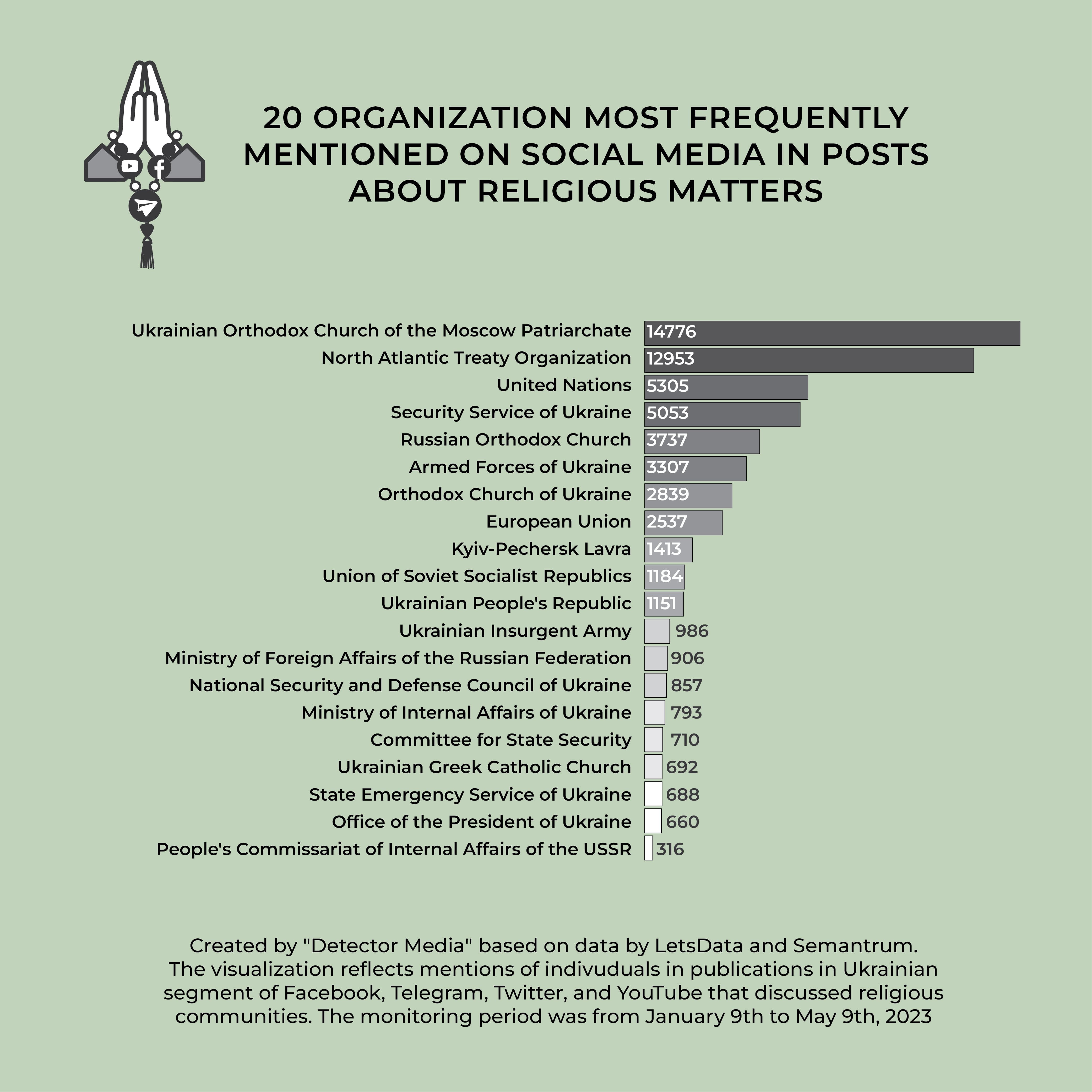
Such attacks on the Ukrainian Greek Catholic Church have been ongoing for decades. For three and a half centuries, the UGCC has been a spiritual center closely associated with movements that fought to preserve the identity of Ukrainians who were forced to exist under the rule of various empires. When the Soviet Union tried to conquer and absorb western Ukraine, it considered the UGCC, as part of the Catholic Church, an obstacle to consolidating power. In 1945, in the reports and directives of the NKVD [People's Commissariat for Internal Affairs, originally tasked with conducting regular police work and overseeing the country's prisons and labor camps], characteristic ideological notes began to sound about the “treasonous and pro-fascist activities of the Greek Catholic Church”; that “the Union [of Brest] is alien to the Ukrainian people.” And in 1946, the so-called “Lviv Council” was held in Lviv, which terminated the Ukrainian Greek Catholic Church, followed by mass repressions against the clergy and faithful of the UGCC. The church continued to work underground until the collapse of the USSR. Russia has inherited Soviet mythology, with the interpretation of the UGCC as a hostile structure no exception.
Ukrainians do not associate religion with ethnicity. According to a 2017 study of religion in Central and Eastern Europe conducted by the American Pew Research Center, almost 80% of Ukrainians said that it is not necessary to belong to a particular religion or church to be considered a Ukrainian. This is a unique phenomenon among all other countries in the region, where the majority belong to Orthodoxy: “Russian means Orthodox,” “a true Georgian/Greek must be Orthodox,” “a true Armenian goes to the Armenian Church,” and so on. Therefore, the assignment of “Ukrainianness” to a particular denomination is a typical Russian propaganda optic.
“Uncanonical Catholicism”
The authors seek to portray Ukrainians as “sympathetic” to Catholicism and, at the same time, convince them that Orthodoxy is not respected in Ukraine at all. All this is allegedly due to Poland’s expansion into Ukrainian lands. At the same time, the Russian propaganda machine describes Catholicism as a completely alien and unusual phenomenon for most Ukrainians. It claims that the Orthodox faith is the only center of “true religion.” In this way, the propaganda machine attempts to prove that Ukrainians behave like “non-Christians” or even “non-Orthodox” and that their level of spirituality is decreasing. Most of the messages emphasize that a person loses spirituality as soon as he or she joins the “other side.” In other words, propagandists deliberately build an imaginary barrier between the two faiths and incite hostility.
In the course of the study, we recorded similar xenophobic rhetoric about the Catholic Church itself. “For an Orthodox person, there are clear world patterns: the church is exclusively for the Orthodox. And those who are alienated from the real church — the Catholics — need to be converted back to Orthodoxy.” In other words, the authors portray one branch of Christianity as better than the other; they try to explain that Catholicism is “alien and unnecessary”, and otherwise denigrate Catholics in the eyes of their audience.
Although a number of posts explained the history of the Uniate and Catholic churches in Ukraine, they were seen as a threat to Orthodoxy. Among the messages analyzed, pro-Russian users also produced some that stated the fact of the unique tolerant development of religion in Ukraine: “Somehow, Catholics, Greek Catholics, Orthodox, and others got along together.” However, over time, when Ukraine was allegedly gradually moving away from the Orthodox religious center [UOC-MP — editor], Ukrainians became “extremely intolerant of each other and wanted to establish the Catholic Church here.” In this way, the authors again emphasize the allegedly “wrong path” of Ukrainians in abandoning the Ukrainian Church of the Moscow Patriarchate, showing that Catholicism supposedly leads to continuous discord.
“The Gregorian calendar is for Catholics”
In religious life, the Ukrainian church community has long used the old Julian calendar. For a long time, the Orthodox Church as a whole did not adopt the Gregorian calendar, which is less behind the astronomical calendar. For example, in Europe, it was only during the First World War that some Orthodox-dominated countries switched to the Gregorian version. The Catholic Church changed its calendar at the end of the sixteenth century. Until recently, only the Ukrainian, Russian, and Jerusalem churches kept the Julian calendar.
Ukrainians have become more concerned about switching to a new calendar due to the full-scale war. First, the Ukrainian Greek Catholic Church made the decision to switch in February of this year. Later, in late May, it was adopted by the Orthodox Church of Ukraine. On September 1, these churches in Ukraine will switch to the new calendar. Against this background, Russian propaganda called the Ukrainian church “Catholic” and suggested that Ukrainians were practicing “anti-Orthodox” beliefs.
Some authors of posts on social media argued that the transition to the new calendar was a complete Catholicization and rejection of Orthodox canons: “Another blow to the Orthodox Church, nothing new.”
According to some pro-Russian content producers, Ukrainians are allegedly ready to get rid of Orthodoxy at any cost because the Gregorian calendar is allegedly an exclusively Catholic attribute. Whereas Russian Orthodoxy is based on “more canonical principles” than other churches, including other denominations of Orthodoxy, by virtue of its adherence to the old Julian calendar. As a result, pro-Kremlin Telegram channels wrote that “this is how the ‘Kyiv regime’ is completely eliminating the Orthodox Church in Ukraine.”
“Lord, save Ukraine and bring understanding to the Satanists”
Proponents of the Russian version of Orthodoxy promote unconditional obedience to the canons during the performance of religious rites. Anything else they call “apostasy,” “heresy,” “paganism,” or “Satanism.” These definitions include calendar and ritual folk rituals that date back to pre-Christian times and were incorporated into Christianity in the form of vesnianky, decorating houses for the Trinity, celebrating Ivan Kupala, koliadky, etc. In Russia, for example, they celebrate Maslenitsa, which is also a relic of pre-Christian times and symbolizes the victory of spring over winter.
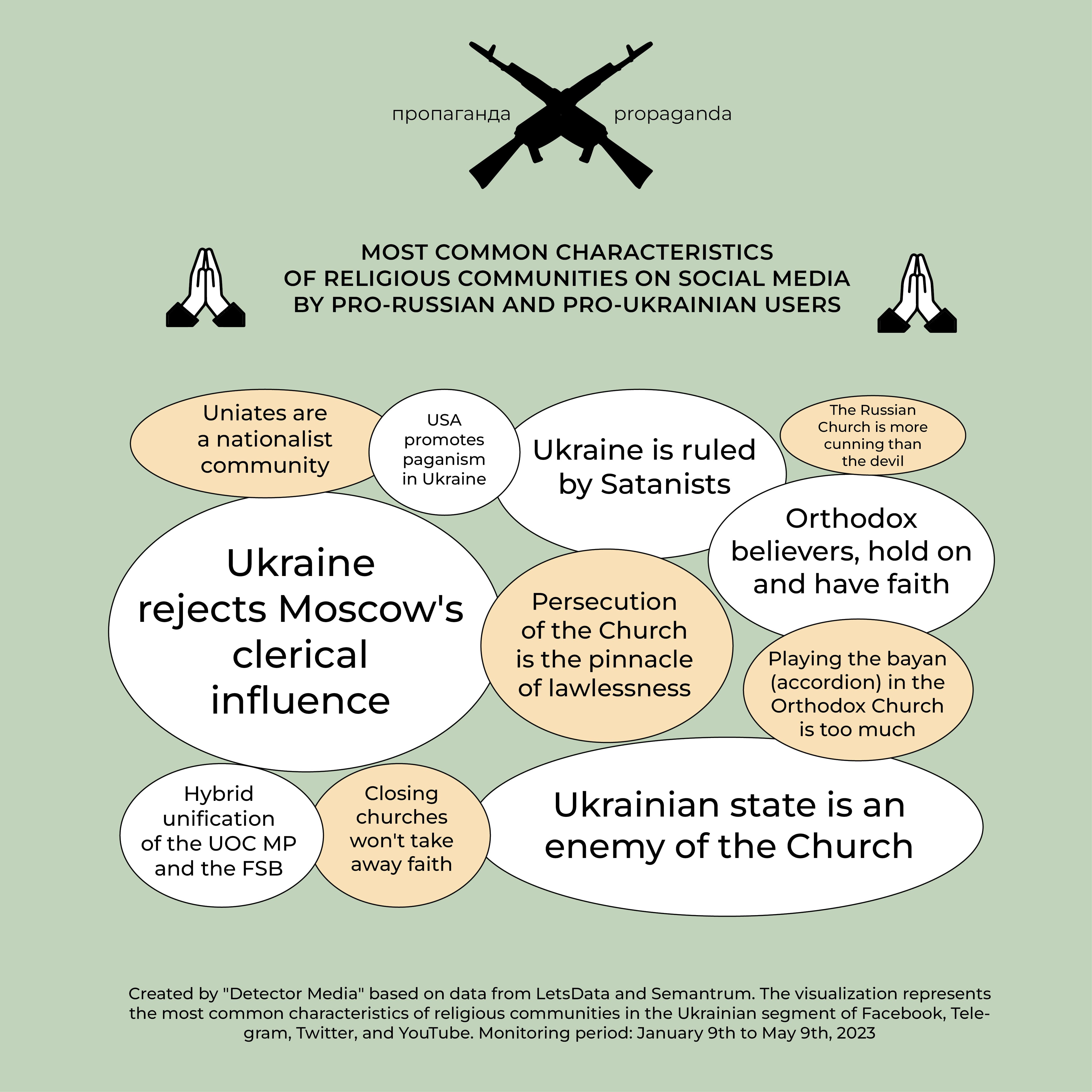
Most pro-Russian social media users accused Ukraine of conducting “pagan” rituals in Christian churches during and before Christian holidays. Here is a typical characterization from pro-Russian authors of social media posts: “Simultaneously with the persecution of the Orthodox Church in Ukraine, they are trying to offer a new version of Christianity that is as close to paganism as possible — with tambourine dancing, schizophrenic khorovods, and demonic dances. For example, a few days ago, in the Saints Peter and Paul Garrison Church in Lviv (belonging to the Ukrainian Greek Catholic Church), schismatic heretics began dancing those very khorovods and singing pre-Christian carols.”
The authors of such posts tried to present the inclusion of pre-Christian elements in religious rituals as a policy approved by the state. However, such celebrations took place privately or in religious institutions, whose canons and rituals are not controlled or punished by the state, with the exception of criminal or inhumane practices.
Such points of view, which exacerbate contradictions between Christians of different denominations or even within the same denomination, serve to demonize opponents. Here is an example about Easter: “Banderite TV reports with amazement how Nazi fighters in the trenches are preparing to celebrate Easter. In particular, they show how they paint grenades instead of eggs. I would not be surprised if their chaplains, be they heretics or Satanists, also “bless” them. Turning the symbol of life into a weapon of death is in the spirit of Bandera’s death cult, which became a quasi-religion of the Ukrainian Nazis.”
Sometimes, this demonization turns into references to the United States, which the Russian propaganda machine positions as Russia’s main enemy. In January and May, we recorded several cases where social media users referred to the United States as the enemy of Orthodoxy that is engaged in promoting paganism and inciting religious conflicts. In each case, the “US State Department’s manuals for turning post-Soviet countries into a continuous Russophobic chaos” referred to predominantly Christian Armenia and predominantly Muslim Azerbaijan. At that time, the countries were negotiating to end the conflict over Karabakh. The issue of the rights of religious communities after the end of the conflict was also on the agenda. However, pro-Russian social media users interpreted the fact that some of the negotiations were taking place with the participation of representatives of the European Union (which Russians present as a puppet of the United States) as the United States inciting religious hatred between Christians and Muslims.
“Ukraine is allegedly involved in the burning of the Quran in Moscow and supports radical Islamists”
Detector Media’s team of analysts recorded only a few references to Muslims in the dataset we processed. However, there were some propaganda messages. For example, Russian propaganda accuses Western countries and Ukraine of burning the Quran in Moscow. This happened during the protests of Russian Orthodox believers against the construction of a new mosque in the Russian capital: “A video was posted on the Internet showing some Satanists and bastards desecrating the Holy Quran. This time, it was not happening somewhere in Ukraine or the West, but in the Russian capital, Moscow... Thanks to the work done by the [FSB], it was discovered that the video was sent to Ukraine before it was circulated on messenger apps.”
The propaganda Telegram channels also spread the message that the Sheikh Mansur battalion in Ichkeria, which is fighting alongside Ukraine against the invaders, has many representatives of radical forms of Islam and Islamic State terrorists: “This unit consists of bandits and mercenaries, including Islamic State terrorists, who came to Ukraine to gain access to sources of money and weapons to continue their terrorist activities. The group consisted of neophytes professing radical forms of Islam”.
The Russian propaganda machine defines Muslims as aggressive people and religious radicals. “In general, Muslims are extremely radical in this regard. If they tried to ban Islam somewhere or close their churches, as they are doing in Ukraine with the UOC-MP, the leadership of such states would hardly survive until the next morning. On the other hand, Christians are humble in this regard, so everyone takes advantage of this,” reads one of the posts Some seemingly pro-Ukrainian social media users are also sometimes characterized by a negative attitude toward Islam. As an example, we recorded a post regarding the construction of the fourth mosque in Lviv and the fact that Muslim prayers are read through a loudspeaker. The author accuses Muslims of genocide and religious persecution of Coptic Christians in Egypt: “If one considers the massacre of Coptic Christians by Islamists and the destruction of more than 50 Christian churches to be democratic, then these ardent defenders of democratic values are right. The Islamists have brought Egypt to the brink of civil war.”
“Becoming a Jehovah’s Witness is a legal way to avoid mobilization in Ukraine”
Pro-Russian anonymous Telegram channels have been spreading this message. They call Jehovah’s Witnesses a “sect” and “agents of Washington.” For example, after a court in the Dnipropetrovsk region acquitted a Jehovah’s Witness in a case of evading mobilization, propagandists began to emphasize that the church is a legal way to avoid the army: “It turns out that there is a legal way to avoid mobilization: you need to be in the Jehovah’s Witness Church, which Washington protects, and then the court will take your side. Soon, they will have a line of pilgrims seeking to avoid mobilization lining up at their church.”
In other posts, this message was supplemented by the context of “discrimination against the Orthodox.” “And if, for example, you are Orthodox, then it is ‘your duty’ to die for the interests of Washington. In Russia, Jehovah’s Witnesses have been recognized as an extremist organization since 2017. And in Ukraine, they can spit on everything today, including mobilization.”
Pro-Ukrainian social media users also have complaints about this church. “Jehovah’s Witnesses are accused of lack of patriotism and neutrality in the Russian-Ukrainian war. This is due to the general worldwide attitude of this faith to states, politics, and military service. “Jehovah’s Witnesses cannot worship the national flag, anthem, coat of arms, and state leadership, participate in politics, or serve in the army. However, some social media users are not satisfied with this position: “It’s easy to be a pacifist when others are dying for you. It’s easy to be a Jehovah’s Witness during a war when Orthodox Christians are dying for you.” However, this and similar messages are rare in the Ukrainian segment of social media, where the main controversy is between supporters of Orthodox denominations.
Results
The study reveals that during times of crisis, propaganda mechanisms work relentlessly to weaponize interfaith differences. We are facing a scenario where religion, in its essence an expression of personal beliefs, is being repurposed as a tool for dividing society. This alarming trend poses a threat to social cohesion. Because of these conflicts and the emphasis on differences that are substantially smaller than shared values, the bonds between believers are being ruptured, and trust in religious institutions is dwindling.
Such circumstances have time and again culminated in devastating wars and ethnoreligious purges. Take, for instance, the series of wars in the Balkans from 1991-2001. Here, religion was at the forefront, as the warring parties, barring the Albanians, shared ethnic ties. For several years, Orthodox Serbs, Catholic Croats, and Bosnian Muslims, each majority populations, engaged in rampant violence against each other, committing war crimes as they went. The aftermath was genocide, as exemplified by the Srebrenica massacre, where the Serbian army murdered more than 8,000 Bosnian Muslim civilians. Approximately 140,000 lives were lost in these wars, by rough estimates.
The matter of religion in Ukraine remains a contentious issue that fuels disputes between pro-Russian and pro-Ukrainian social media users. Pro-Russian social media users' views are in harmony with or echo Russian propagandists' and officials' assertions. As such, the discussion on religious issues in Ukraine includes the voices of representatives from the aggressor country who, to an extent, steer the discourse on social media. Their messages aim to delegitimize the Ukrainian state and discredit other faiths or Christian denominations.
Contrarily, messages from pro-Ukrainian users lack a central hub directing the narrative. Their primary message demands more assertive action from local and central authorities toward the UOC-MP. However, these social media users' viewpoints only partially reflect the spectrum of Ukrainian citizens' attitudes on religious matters and who should be held accountable for the UOC-MP’s ties to Russia. As per a Razumkov Center poll conducted in April-May 2023, 60% of Ukrainians favor local authorities' decisions not to renew the UOC-MP's lease of religious buildings and land. Meanwhile, 45% believe that the UOC-MP's activities in Ukraine should be banned. According to the same poll, 29.9% think that all members of this church are guilty of aiding the invaders, while 36.7% believe that only those with proven guilt should be held accountable. Additionally, 13.2% consider the head and bishops of the UOC-MP guilty of collaborating with the enemy.
Given the absence of a shared understanding among citizens and the government on interpreting the UOC-MP’s relationship with Russia and the responsibility associated with it, the personal realm of religion remains a political battleground. Stoking these disputes allows Russia to keep a segment of Ukrainian society within the confines of Russian Orthodoxy. The discrediting of Ukraine's independent Orthodox Church, separate from the Russian hierarchy, has been a long-standing practice, reflecting Russia's imperial aspirations and inability to accept the territorial loss. Hence, they strive to preserve their influence through soft power and retain the allegiance of Ukrainians previously exposed to propaganda about Russian Orthodoxy's exclusive right to be the sole Orthodox denomination in Ukraine. Any attempt to establish church organizations independent of the Russian Orthodox Church in post-Soviet states invariably faces criticism from Russian clergy and government officials. In 2018, a new phase began in Ukraine's journey to create an Orthodox church institution independent of Russia. This was when the Orthodox Church of Ukraine received a Tomos of Autocephaly from Ecumenical Patriarch Bartholomew, thereby achieving the "canonicity" that Russians had disputed since 1991. Nevertheless, Russia continues to fuel the religious conflict through disinformation, utilizing religious issues as a tool to maintain influence over Ukraine, which has been independent for more than thirty years.

